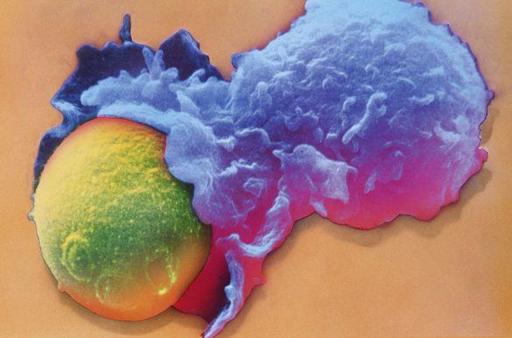Ross & Wilson Anatomy and Physiology in Health and Illness (171 page)
Read Ross & Wilson Anatomy and Physiology in Health and Illness Online
Authors: Anne Waugh,Allison Grant
Tags: #Medical, #Nursing, #General, #Anatomy

15.1
Phagocytosis
366
15.2
Complement
367
15.3
The acute inflammatory response
367
15.4
T-cells
370
15.5
B-cells
371
15.6
Antibodies
372
15.7
Allergic response
374
From the months spent in the womb to the end of his life, every individual is under constant attack from an enormous range of potentially harmful invaders. These threats include such diverse entities as bacteria, viruses, cancer cells, parasites and foreign (non-self) cells, e.g. in tissue transplant. The body has therefore developed a wide selection of protective measures, which can be divided into two categories.
Non-specific defence mechanisms
These protect against any of an enormous range of possible dangers.
Specific defence mechanisms
These are grouped together under the term immunity. Resistance is directed against only one specific invader. In addition,
immunological memory
develops, which confers long-term immunity to specific infections. An
antigen
is anything that stimulates an immune response.
The later sections of the chapter describe some disorders of lymphatic system function.
Non-specific defence mechanisms
Learning outcomes
After studying this section, you should be able to:
identify the body’s main non-specific defence cells
describe the functions and features of the inflammatory response
explain the process of phagocytosis
list the main antimicrobial substances of the body.
These are the first lines of general defence; they prevent entry and minimise further passage of microbes and other foreign material into the body.
There are five main non-specific defence mechanisms:
•
defence at body surfaces
•
phagocytosis
•
natural antimicrobial substances
•
the inflammatory response
•
immunological surveillance.
Defence at body surfaces
When skin and mucous membrane are intact and healthy, they provide an efficient physical barrier protecting the body’s exposed surfaces. Few pathogens can establish themselves on healthy skin. Mucus secreted by mucous membranes traps microbes and other foreign material on its sticky surface. Sebum and sweat secreted onto the skin surface contain antibacterial and antifungal substances.
Hairs in the nose act as a coarse filter, and the sweeping action of cilia in the respiratory tract moves mucus and inhaled foreign materials towards the throat. Then it is coughed up or swallowed.
The one-way flow of urine from the bladder minimises the risk of infection ascending through the urethra into the bladder.
Phagocytosis
The process of phagocytosis (cell eating) is shown in
Figure 4.10, page 62
. Phagocytic defence cells such as macrophages and neutrophils migrate to sites of inflammation and infection (chemotaxis), because neutrophils themselves and invading microbes release chemicals that attract them (chemoattractants). Phagocytes trap particles either by engulfing them (
Fig. 15.1
) or by extending long pseudopodia towards them, which grasp them and reel them in (
Fig. 15.1
). These cells are non-selective in their targets; they bind, engulf and digest foreign cells or particles.
Figure 15.1
White blood cell (blue) phagocytosing a yeast cell (yellow).
Macrophages have an important role as a link between the non-specific and specific defence mechanisms. After ingestion and digestion of an antigen, they act as
antigen-presenting cells
, displaying their antigen on their own cell surface to stimulate T-lymphocytes and activate the immune response (
p. 370
).
Natural antimicrobial substances
Hydrochloric acid
This is present in high concentrations in gastric juice, and kills the majority of ingested microbes.
Lysozyme
This is a small protein with antibacterial properties present in granulocytes, tears, and other body secretions, but not in sweat, urine or cerebrospinal fluid.
Antibodies
These are present in nasal secretions and saliva, and inactivate bacteria (
p. 371
).
Saliva
This is secreted into the mouth and washes away food debris that may otherwise encourage bacterial growth. Its slightly acid medium is antibacterial.
Interferons
These chemicals are produced by T-lymphocytes and by cells that have been invaded by viruses. They prevent viral replication within infected cells, and the spread of viruses to healthy cells.
Complement


